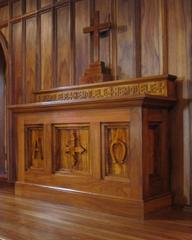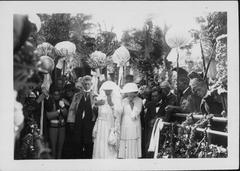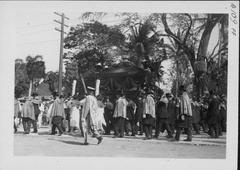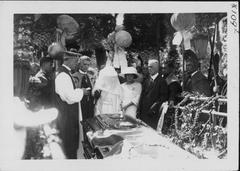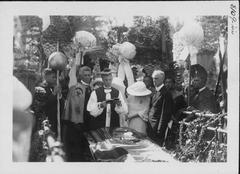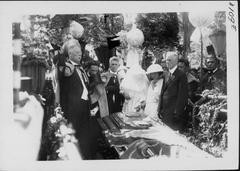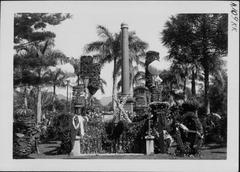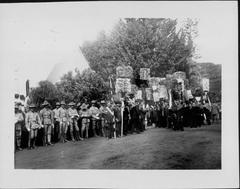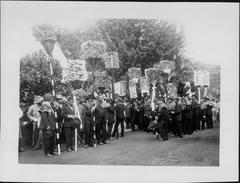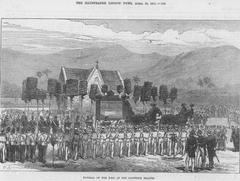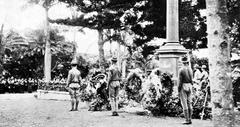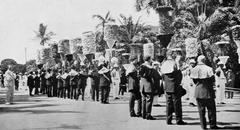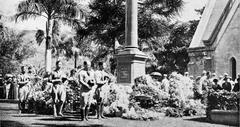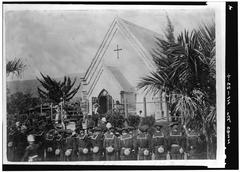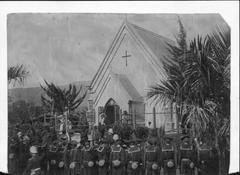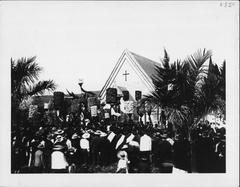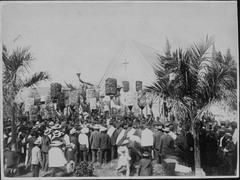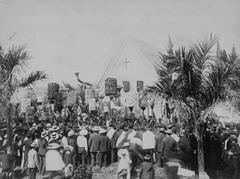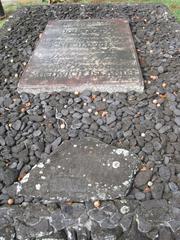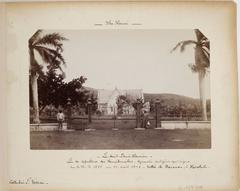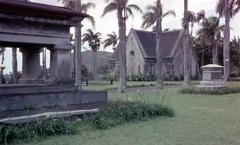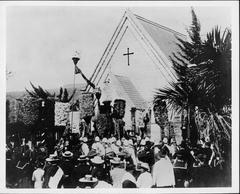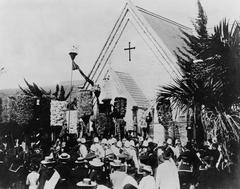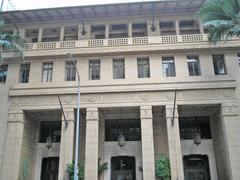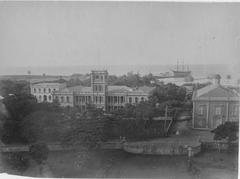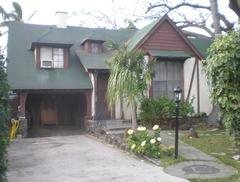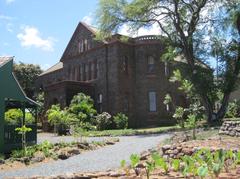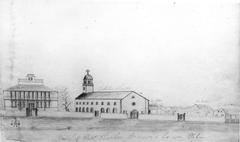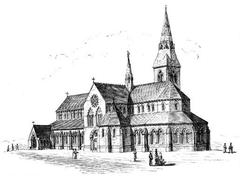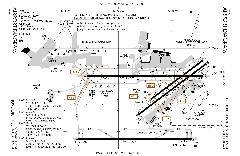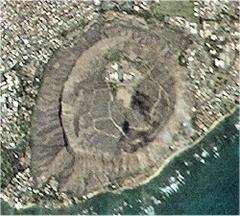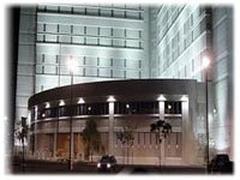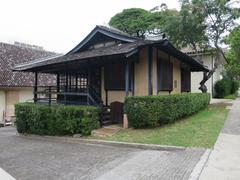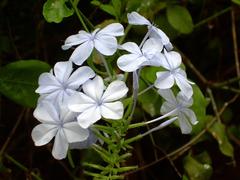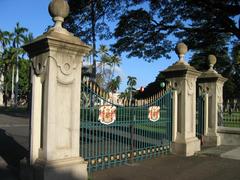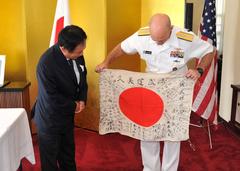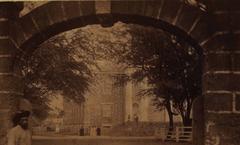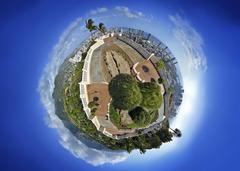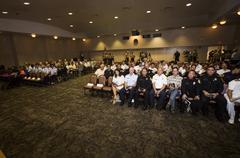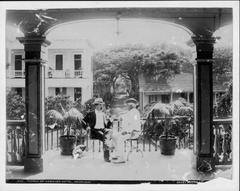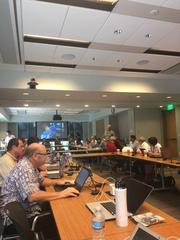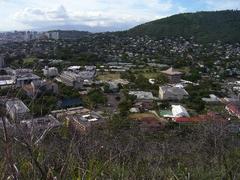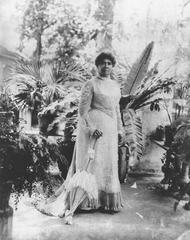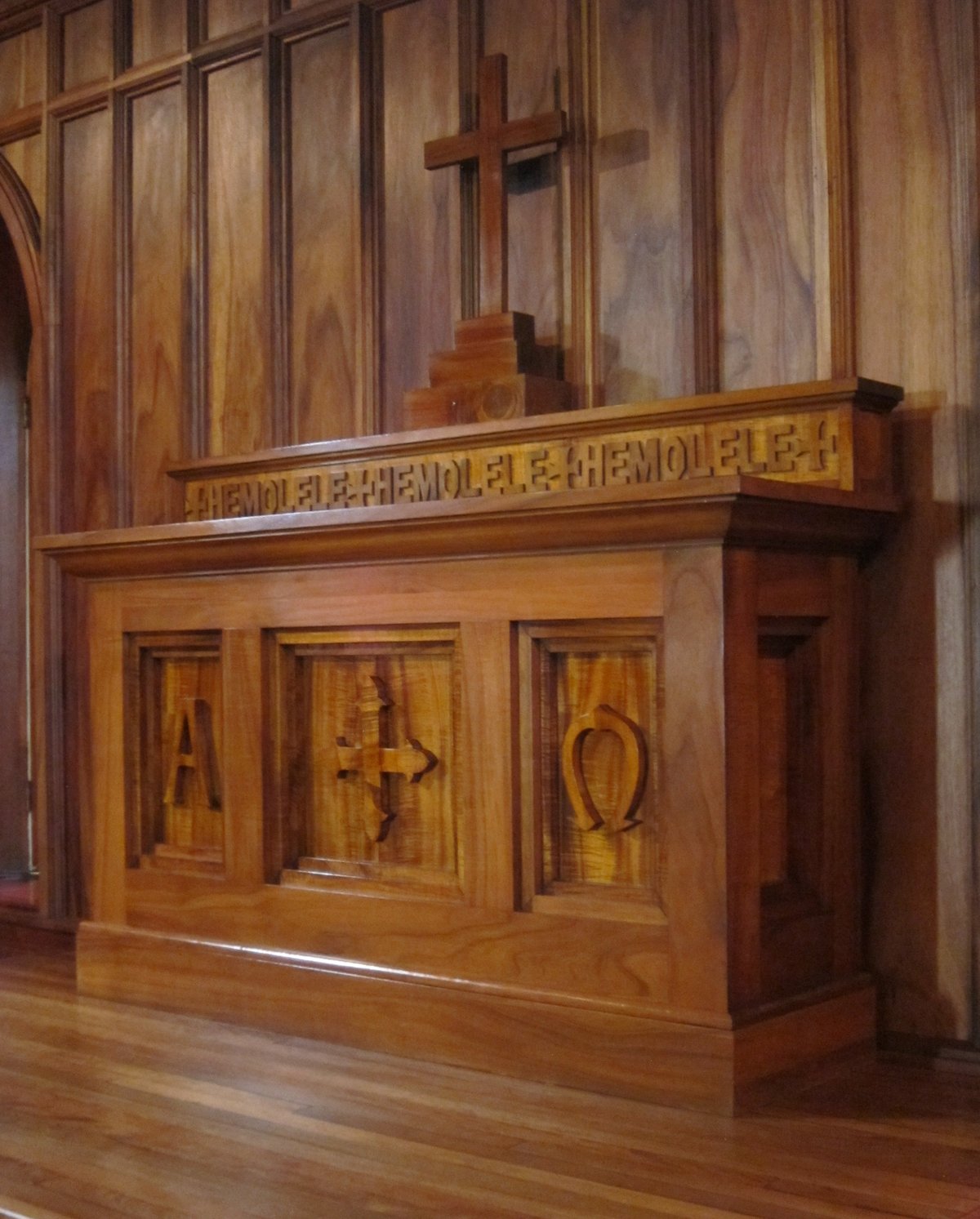
Royal Mausoleum of Hawaii: Visiting Hours, Tickets, and Historical Sites Guide
Date: 15/06/2025
Introduction
The Royal Mausoleum of Hawaii, or Mauna ʻAla (“Fragrant Hills”), stands as one of Honolulu’s most sacred and historically significant landmarks. Nestled in Nuʻuanu Valley, this site serves as the final resting place for the Hawaiian monarchy and aliʻi (nobility), providing visitors with a unique opportunity to explore the intersection of history, spirituality, and culture that defines the Hawaiian Islands. This guide delivers comprehensive information on Mauna ʻAla’s history, cultural protocols, visiting hours, ticketing, accessibility, and practical tips—empowering you to experience this revered site with respect and understanding (HuffPost, DLNR, Only in Hawaii, Civil Beat).
Table of Contents
- Introduction
- Historical Background
- Legal and Stewardship Status
- Cultural and Spiritual Significance
- Visiting Mauna ʻAla
- Architectural and Landscape Features
- Nearby Attractions
- Frequently Asked Questions
- References
Historical Background
Early Royal Burials and the Origins of Mauna ʻAla
Long before Western contact, Hawaiian aliʻi were interred in secret locations to safeguard their iwi (ancestral bones), deeply revered for their spiritual power (mana). The introduction of Western-style royal tombs began in 1825 with the construction of a tomb for King Kamehameha II and Queen Kamāmalu, signaling a shift toward centralized, honored burial sites (HuffPost, Verdant Traveler).
Construction of Mauna ʻAla
Following the death of Prince Albert in 1862, King Kamehameha IV and Queen Emma initiated the construction of Mauna ʻAla as a new royal burial ground. Completed in 1865 under King Kamehameha V, the mausoleum features striking Gothic Revival architecture and is surrounded by a black iron fence adorned with gold accents and the royal seal (Hawaii Vacation Fun, Only in Hawaii).
Notable Tombs and Interments
Mauna ʻAla contains over 50 interments, including:
- Kamehameha Tomb: Kings Kamehameha II–V and Queen Emma.
- Kalākaua Crypt: King David Kalākaua, Queen Liliʻuokalani, and other family members.
- Other Tombs: High-ranking chiefs and royal advisors, such as Robert Crichton Wyllie.
- The most recent interment is Abigail Kawānanakoa (2022) (Civil Beat).
- Notably, Kamehameha I’s burial site remains unknown; King Lunalilo is buried at Kawaiahaʻo Church (Wikipedia).
Legal and Stewardship Status
Mauna ʻAla holds unique legal status, exempt from U.S. public land laws since 1900. It is among the few places where the Hawaiian flag flies alone, symbolizing the monarchy’s enduring legacy. Since 1967, the Department of Land and Natural Resources (DLNR) has managed the site, with continued advocacy for Native Hawaiian stewardship (Only in Hawaii, Historic Hawaii Foundation, Civil Beat).
Cultural and Spiritual Significance
Protocols and Rituals
Mauna ʻAla is revered as a wahi pana (sacred place), central to Hawaiian beliefs about ancestry and mana. Visitors, especially those of Hawaiian descent, may offer oli (chants) or pule (prayers) upon entering, and are expected to observe silence and dress modestly (Hawaiian Burials). Funerary customs include midnight processions, kahili (feather standards), and sacred staff rituals (Moolelo Mauna Ala Staffs).
The Role of the Kahu
The Maiʻoho family has served as kahu (caretakers) for six generations, upholding spiritual protocols and maintaining the site’s sanctity (PBase Mauna Ala). The kahu oversee ceremonies, landscape health, and cultural education.
The Landscape as Living Memorial
The mausoleum grounds are planted with hala, ʻōhiʻa lehua, royal palms, and hibiscus—plants rich in symbolism and essential to spiritual harmony. Restoration and preservation efforts by descendants and supporters, such as Princess Abigail Kawānanakoa, have ensured the vitality of this living memorial (Abigail Kawānanakoa Legacy).
Visiting Mauna ʻAla
Hours and Admission
- Hours: Mauna ʻAla is generally open Tuesday–Saturday, 9:00 AM–5:00 PM. It is closed Sundays, Mondays, and major holidays (DLNR Hawaii).
- Admission: Free; no tickets required. Donations for site upkeep are appreciated.
- Closures: Grounds may be closed for ceremonies or maintenance—check ahead for updates.
Location and Directions
- Address: 2261 Nuʻuanu Avenue, Honolulu, HI.
- Getting There: Accessible by car, public transit, and rideshare; limited parking on-site.
Accessibility
- The grounds are mostly wheelchair accessible, though some areas feature uneven terrain. Contact the curator in advance for special accommodations.
Tips for Visitors
- Attire: Wear modest clothing suitable for a memorial.
- Behavior: Maintain silence or speak softly, especially near tombs and the chapel.
- Photography: Allowed outdoors; prohibited inside the mausoleum and near crypts.
- Offerings: Lei and flowers may be left at designated locations.
Group Visits and Tours
- Groups of 25+ should schedule visits in advance.
- Guided tours may be arranged through local organizations and select tour companies; advance booking is recommended.
Photography and Etiquette
- Personal photography is welcome outdoors but restricted indoors and near tombs.
- Tripods and commercial photography require permission.
- No food, drink, or pets (except service animals) are allowed on site.
Architectural and Landscape Features
Main Mausoleum
The main building, completed in 1865, is a rare example of Gothic Revival architecture in Hawaii, with pointed arches, stained-glass windows, and a steep roof (Big Island Times). The interior is not open to the public.
Royal Tombs
- Kamehameha Dynasty Tomb: Central underground crypt for Kamehameha II–V and family.
- Kalākaua Dynasty Tomb: Final resting place for King Kalākaua, Queen Kapiʻolani, and Queen Liliʻuokalani.
- Additional crypts and memorials for other aliʻi and advisors.
Chapel and Curator’s Residence
- The chapel, used for royal funerals and ceremonies, sits adjacent to the mausoleum and is not generally open to the public.
- The curator’s historic residence is located on-site.
Memorials and Flora
- Interpretive plaques and signage detail royal lineages and history.
- The landscape features native trees and plants, supporting both cultural symbolism and local wildlife.
Nearby Attractions
- ʻIolani Palace: The only royal palace in the United States.
- Bishop Museum: Hawaii’s premier cultural and natural history museum.
- Queen Emma Summer Palace: A royal retreat located nearby.
- Mission Houses Museum: Historic site of early Western missionaries (Trip.com).
Frequently Asked Questions (FAQ)
Q: Is there an admission fee?
A: No, admission is free.
Q: What are the visiting hours?
A: Typically Tuesday–Saturday, 9:00 AM–5:00 PM; closed Sundays, Mondays, and major holidays.
Q: Are guided tours available?
A: Occasionally, through local cultural organizations or tour companies; advance arrangements recommended.
Q: Is Mauna ʻAla wheelchair accessible?
A: Most pathways are accessible, though some may be uneven; contact the site for details.
Q: Can I take photos?
A: Yes, outdoors only. No photography inside the mausoleum or near tombs.
Q: Are pets allowed?
A: Only service animals are permitted.
References and Further Reading
- HuffPost: Royal Mausoleum of Hawaii
- DLNR: Royal Mausoleum State Monument
- Only in Hawaii: Royal Mausoleum
- Civil Beat: OHA and Mauna ʻAla
- Hawaiian Burials: Cultural Significance
- PBase: Mauna ʻAla Photo Archive
- Big Island Times: New Curator for Mauna ʻAla
- DLNR Hawaii: News Release
- Trip.com: Mauna ʻAla Attraction
Final Tips
Visiting Mauna ʻAla is both a privilege and a responsibility. By observing cultural protocols, respecting the sacredness of the grounds, and supporting preservation efforts, you contribute to the legacy and future of Hawaiian heritage. For further updates, event announcements, and cultural resources, download the Audiala app or follow related social media channels.
Enjoy your visit to one of Hawaii’s most treasured historical sites.
